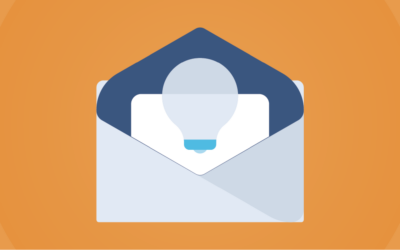Maintaining chilled water systems is crucial to ensure their longevity, efficiency, and reliability. Neglecting maintenance can lead to increased energy consumption, unexpected breakdowns, and costly repairs. Here are essential maintenance tips to help you keep your chilled water system in optimal condition.
1. Conduct Regular Cleaning and Inspections
Regular inspections are crucial for identifying potential issues before they become major problems thereby extending equipment life. It’s recommended to create and deploy a schedule for routine checks of all system components, including chillers, pumps, valves, and pipes. This proactive approach can prevent minor issues from escalating into costly repairs or system failures. Here’s a closer look at what to inspect:
Heat exchangers are critical components in chilled water systems, responsible for transferring heat from one medium to another. Over time, they can become fouled with dirt, scale, and biological growth, which can significantly reduce their efficiency. Proper maintenance of heat exchangers includes:
- Perform regular descaling to remove deposits
- Conduct periodic leak tests to ensure the integrity of the heat exchanger
- Use appropriate cleaning agents and follow manufacturer guidelines for cleaning frequency and methods
Chillers are the heart of the system and their efficiency directly impacts overall system performance. Proper maintenance of chillers includes:
- Inspection of refrigerant levels
- Checking for unusual noises and proper functioning of electrical components
- Ensuring that condenser and evaporator coils are clean and free of debris
- Ensuring proper oil levels and any monitoring for signs of oil leaks
- Inspecting chiller tubes for signs of fouling or scaling
Regular pump inspection is crucial as it ensures consistent water flow and prevents potential failures, which can disrupt the entire chilled water system and lead to increased operational costs. Proper maintenance of pumps include:
- Check for signs of wear, leaks, and proper alignment
- Ensure that bearings and other moving parts are well-lubricated, and inspect pump seals for leaks
- Verify that the pump motor is operating within the correct voltage and amperage ranges to prevent overheating and premature failure
Frequent valve inspection is essential for ensuring proper water flow and pressure, which significantly impacts the overall efficiency and reliability of the chilled water system. Proper maintenance of valves includes:
- Verifying that valves open and close fully and that there are no leaks or corrosion
- Ensuring that actuators and control systems are functioning correctly
Scheduled pipe inspections identify and address signs of corrosion, leaks, or misalignment, ensuring optimal flow rates and preventing potential failures that can lead to significant system inefficiencies and increased operational costs. Proper maintenance of pipes include:
- Inspecting pipes regularly for signs of corrosion and applying protective coatings or treatments as necessary to prevent rust and extend the lifespan of the piping system
- Verifying that all pipes are adequately insulated, and repairing or replacing damaged or missing insulation to prevent energy losses and maintain optimal system performance
- Checking pipe supports and hangers to ensure they are secure and not causing undue stress on the piping system
Regular filter and strainer inspection is vital to maintaining water quality and preventing debris from entering the system, which can reduce efficiency, cause damage to components, and lead to increased operational costs. Proper maintenance of strainers and filters includes:
- Regularly cleaning strainers and filters to remove accumulated debris and particulate matter, ensuring unobstructed water flow and optimal system performance.
- Replacing filters and strainer elements according to the manufacturer’s recommendations
- Conducting routine inspections to check for signs of damage, clogging, or wear
2. Monitor Water Quality
Poor water quality can lead to corrosion, scaling, and biological growth, all of which can damage the system, reduce efficiency and decrease equipment lifespan. Conducting regular water quality tests to monitor pH levels, hardness, alkalinity, and the presence of any contaminants ensures maximum performance and efficiency. Implement a water treatment program that includes:
- pH Testing: Regularly test the pH levels of the water to ensure values are within the optimal range, preventing corrosion or scaling that can damage system components
- Hardness Testing: Check water hardness levels frequently and treat the water to prevent mineral deposits that can cause scaling and reduce heat transfer efficiency
- Microbial Control: Conduct microbial testing and apply biocides or other treatments as necessary to control biofouling, which can obstruct water flow and reduce system performance
3. Protect Pumps and Motors
Pumps and motors are essential components of chilled water systems, responsible for circulating the water throughout the system. To maintain their efficiency and longevity:
- Ensure that pumps and motors are properly lubricated. Lack of lubrication can lead to increased friction, overheating, and eventual failure of these components.
- Check the alignment of pumps and motors regularly. Misalignment can cause excessive vibration and wear, leading to premature failure.
- Regularly verify the pump’s performance curves to ensure operation is within optimal range, preventing issues such as cavitation or excessive wear.
- Perform vibration analysis to detect early signs of mechanical issues. Unusual vibrations can indicate problems such as imbalances or bearing wear, which should be addressed promptly.
4. Employ System Balancing Techniques
Proper system balancing ensures that the chilled water system distributes water evenly across all zones and components, optimizing efficiency and performance. Imbalances can lead to uneven cooling, increased energy consumption, and excessive wear on certain components.
- Flow Measurement and Adjustment: Regularly measure the flow rates at various points in the system and adjust balancing valves to ensure that each part of the system receives the correct amount of chilled water. This helps maintain consistent cooling performance and prevents the overloading of any single component.
- Temperature Monitoring: Continuously monitor the temperatures at different points in the system to identify and correct imbalances. Temperature discrepancies can indicate flow issues or component malfunctions that need to be addressed to maintain overall system efficiency.
- Valve Adjustment: Periodically adjust control and balancing valves to fine-tune the system. This helps to compensate for any changes in the system load or operating conditions, ensuring that the system remains balanced and operates efficiently.
5. Employ Chiller Plant Optimization Solutions
Chiller plant optimization is an advanced approach to improving the efficiency and performance of the entire chilled water system. By integrating data from various system components and utilizing sophisticated control algorithms, chiller plant optimization can dynamically adjust operations to achieve optimal performance. This also utilizes equipment more intelligently, leading to less equipment wear and tear.
Enhanced Monitoring and Control: Chiller plant optimization systems often include advanced monitoring capabilities that provide real-time data on system performance. This data can be used to enhance regular inspections and monitoring, allowing for more precise detection of potential issues and more efficient maintenance planning.
Proactive Maintenance: With the detailed insights provided by chiller plant optimization systems, maintenance can be more proactive rather than reactive. This means that potential issues can be identified and addressed before they lead to system failures or significant efficiency losses.
System Balancing: Some optimization solutions automatically adjust flow rates and valve positions to maintain system balance, reducing the need for manual adjustments and ensuring consistent performance. This continuous balancing helps prevent uneven cooling and extends the lifespan of system components.
Documentation and Analysis: Detailed maintenance records are essential for tracking system performance and planning future maintenance. Chiller plant optimization systems can automate the collection of this data, providing comprehensive reports and analysis that support informed decision-making.
Prolonging the life of your chilled water system requires a proactive approach to maintenance. Implementing such an approach enhances the efficiency, reliability, and lifespan of a chilled water system.


